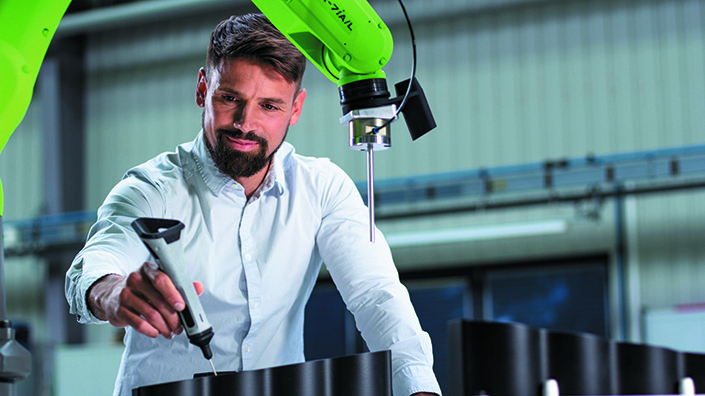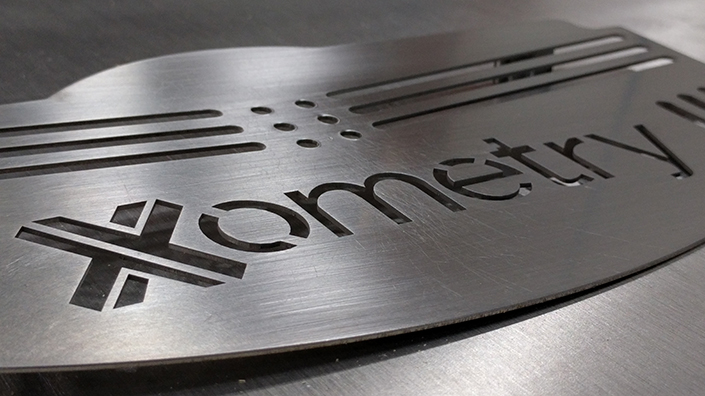The combination of robotics, 3D printing, machine learning and the Internet of Things was going to make all but the most skilled workers redundant.
But this vision was largely not borne out by reality. The Fourth Industrial Revolution has proven to be a process, rather than an event. Industrial automation has yet to fully live up to the hype that has surrounded it.
In a Deloitte survey of 2,000 executives published in January 2020, two-thirds of respondents admitted that their companies had no formal strategies for Industry 4.0, or were taking an ad hoc approach towards it. And research from Plutoshift, a company that provides performance monitoring solutions for industry, has highlighted the inconsistent uptake of artificial intelligence by manufacturers. Just 57% of the 250 manufacturing firms surveyed said they had implemented AI projects with a clear goal – while 20% said they were acting on industry pressure to use the technology.
If they’re not implemented properly, Industry 4.0 technologies risk becoming solutions in search of problems. Even Elon Musk has admitted to using “excessive automation” in his Tesla factories, which famously complicated the production of the Model 3 sedan. But in the post-Covid world manufacturers will doubtless be searching for new operational efficiencies – while a wider economic slowdown means they’ll have less capital to invest.
It’s possible that genuinely innovative companies, which can demonstrate their use cases and their worth, will thrive under these kinds of market pressures. Amid the turmoil, only one thing seems certain: yesterday’s assembly lines and supply chains won’t look the same on the other side. But with the right technologies, implemented at the right time, the sector will emerge more connected than ever.
Dismantling silos
Manufacturing’s slow and uneven uptake of Industry 4.0 technologies can partly be put down to issues with data silos and system interoperability. While these might sound like tech buzzwords, the problem boils down to poor communication between a company’s IT programs, systems and databases. In addition, industrial machines that are already connected to the internet will produce huge quantities of operational data that could be of real value to an organisation.
However, it can be difficult to gather this data because machines have their own individual data aggregation formats and interfaces. The result is a disjointed ecosystem that fails to reap the benefits of connectivity. The data silos created by a company’s various legacy and proprietary systems can understandably make a complete digital overhaul seem daunting.
What’s more, addressing these flaws can require a serious degree of investment that ultimately delivers only modest returns within a single company. This is why Microsoft and the BMW Group set up the Open Manufacturing Platform (OMP) in 2009: to help firms “accelerate innovation at scale” through cross-industry collaboration, knowledge and data sharing. The alliance now counts drinks firm AB InBev and Bosch among its members.
Pandemic causes problems
“Covid-19 placed immense pressure on all aspects of manufacturing, from supply-chain challenges to increasingly volatile demand signals,” explains Jeremy Krebs, senior programme manager at Microsoft and the OMP’s treasurer. “Technology solutions were not immune to these disruptions and the net impact accelerated the need for digital transformation, with a heightened focus on adaptability, scaleability and interoperability. The OMP is helping support the adoption of Industry 4.0 technologies by bringing together manufacturers with different backgrounds and from different sectors to solve common challenges.”
Training for robots

Wandelbots make programming robots more straightforward
Wandelbots, a robotics start-up firm from Dresden, Germany, became an associate partner of the OMP last August. The firm’s solution helps non-programmers ‘teach’ robots how to do specific tasks on the shop floor. Programming and reprogramming robots has historically been costly, time consuming and inflexible, as every device had to be programmed in its proprietary programming language by expert coders.
But with Wandelbots’ TracePen technology a human demonstrator simply performs the activity a robot is supposed to mimic with a wireless pen in their hand. Software then converts this direction into automation scripts for robots – regardless of their platform. According to Martin Wanitschke, chief of staff at Wandelbots, it’s especially important to demystify robot programming in the era of Covid-19, when the need for resilient manufacturing capacity is stronger than ever.
“We can see that many manufacturers are planning to bring parts of their outsourced supply chains back under their sovereignty, simply so that geographic boundaries no longer have to be crossed in assembling total products from individual parts,” he says. “And given a labour market that still has a major shortage of experts – which was one of the main reasons for outsourcing process steps – this won’t work without automation technologies.”
Distributed advantage
It’s not realistic to expect a company to fulfil all of its manufacturing duties in-house. Even large industrial conglomerates have to seek outside expertise from time to time. This is where the concept of distributed manufacturing comes into its own. Large-scale offshore manufacturing has notable downsides – with several time zones and logistics hubs standing between companies and their parts or products.
However, under a distributed manufacturing model, geographically dispersed manufacturing facilities are linked up via the internet. This means that customer firms can rely on a network of manufacturers in a preferred geographical area, rather than a single overseas supplier. They also have freedom to select the most suitable materials and techniques.
“A lot of manufacturers are really good at doing one or two, or even 10, things, but not the whole wide set,” says Bill Cronin, chief revenue officer at Xometry, a Maryland-based start-up firm that has helped to bring distributed manufacturing into the mainstream. “It’s not just about whether I can get a 3D-printed part, it’s about what’s best for my needs. Engineers now want what’s right for their project. So they are needing to look at a wider range of suppliers to get what they need quickly.”

Xometry's platform matches customers to the best parts suppliers
Xometry’s platform combines AI with algorithms to help customers predict the market price of their desired parts within seconds. Next, the software searches a database of 5,000 manufacturers to match the job specifications to the company best placed to fulfil them. According to Cronin, Xometry now works with more than 40% of the Fortune 500 companies. The firm recently facilitated the manufacturing of parts destined for the International Space Station. Xometry’s platform also allowed companies to scale up production of key medical devices during the pandemic.
Response to Covid
“In the context of Covid, we saw a massive acceleration last spring in terms of companies that were switching industry,” says Cronin. “We work with aerospace and automotive companies who were all of a sudden trying to figure out how to make parts for masks or ventilators or temperature measurement devices. And what was the quickest way for them to do it? It was for them to access capacity that was already there.”
Both Xometry and Wandelbots attracted serious investment during last year’s economic slowdown – a credit, surely, to their clear use cases. Xometry announced a $75m series E investment last September, which will allow it to continue to expand its geographical footprint. It has been reported that the company will seek to go public in 2021. Meanwhile, Wandelbots raised a $30m series B funding round last year.

Xometry facilitated the manufacturing of parts for the International Space Station (Credit: NASA)
Funding for manufacturing start-ups has amounted to $3bn since 2013, with the lion’s share going to US firms. This is a drop in the ocean compared to sectors such as fintech. Europe’s fintech start-ups, for instance, raised $3.4bn between March and mid-August 2020 alone. Robin Dechant, an investor with Berlin’s Point Nine Capital, an early-stage venture capital firm, believes that today’s market pressures could force slow-moving manufacturing giants to start seriously investing in digitisation. And start-ups that can clearly demonstrate their worth will be the ones that get ahead.
Proving value
“Every application that has a very fast return on investment (ROI) is well suited to success after the pandemic,” says Dechant. “I think the big reason many start-ups don’t work is that client companies don’t see their products’ ROI. And it takes months, even years, to implement it and to see the results. I think many factories are afraid of the big change management, and the more start-ups can show value to these companies, the easier it gets for them.”
For years, many large manufacturers appear to have adhered to the ‘if it ain’t broke, don’t fix it’ model of technology investment. Some may have been rightfully concerned about bringing in complex new systems. But data and skills silos are slowing things down, and the danger of supply-chain disruptions is clearer than ever. Companies, large or small, that can offer easy-to-implement solutions to these modern problems may just usher in the Fourth Industrial Revolution for real.
Want the best engineering stories delivered straight to your inbox? The Professional Engineering newsletter gives you vital updates on the most cutting-edge engineering and exciting new job opportunities. To sign up, click here.
Content published by Professional Engineering does not necessarily represent the views of the Institution of Mechanical Engineers.